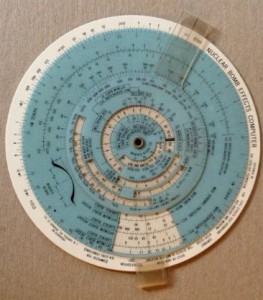AP’s Matt Lee: US Officials Say Netanyahu Trying to Destroy Iran Negotiations
I haven’t chimed in yet on the political drama that has been building around the approaching deadline in the P5+1 negotiations with Iran and the massive breach of protocol by John Boehner in inviting Benjamin Netanyahu to address Congress just before the deadline (and just before elections in Israel). More recent rumblings on that front had the US already stating Obama would not meet with Netanyahu, along with suggestions that both John Kerry and Joe Biden are likely to be out of the country when Netanyahu is in Washington. Further, hints were coming out that the US is becoming increasingly irritated with Bibi over his leaking of information that the US has shared on how negotiations with Iran are proceeding.
AP’s Matt Lee shed much more light on these issues yesterday. He forced State Department spokesperson Jen Psaki to confirm that the US has now started withholding “classified” parts of the negotiations from Israel. Lee went beyond what he was able to pry out during Psaki’s briefing, producing confirmation that the US now feels that Netanyahu is determined to prevent any final deal between the P5+1 and Iran:
The Obama administration said Wednesday it is withholding from Israel some sensitive details of its nuclear negotiations with Iran because it is worried that Israeli government officials have leaked information to try to scuttle the talks — and will continue to do so.
In extraordinary admissions that reflect increasingly strained ties between the U.S. and Israel, the White House and State Department said they were not sharing everything from the negotiations with the Israelis and complained that Israeli officials had misrepresented what they had been told in the past. Meanwhile, senior U.S. officials privately blamed Prime Minister Benjamin Netanyahu himself for “changing the dynamic” of previously robust information-sharing by politicizing it.
Working behind the scenes, Lee was able to get unnamed officials to fill in more detail:
But while Earnest and Psaki said the limitations on information sharing were longstanding, U.S. officials more directly involved in the talks said the decision to withhold the most sensitive details of the negotiations dated back only several weeks.
Those officials, speaking on condition of anonymity because they were not authorized to speak publicly, said the administration believes Netanyahu, who is facing a March 17 election at home, has made a political decision to try to destroy the negotiations rather than merely insist on a good deal. This, they said, had led to politically motivated leaks from Israeli officials and made it impossible to continue to share all details of the talks, particularly as Netanyahu has not backed down on his vow to argue against a nuclear deal when he speaks to Congress.
And here’s where it gets really interesting. Pushing on the issue of just what Israel has been leaking, Lee has this:
Neither Earnest nor Psaki would discuss the details of the leaks, but senior U.S. officials have expressed consternation with reports in the Israeli media as well as by The Associated Press about the number of centrifuges Iran might be able to keep under a potential agreement. Centrifuges are used to enrich uranium and diplomats familiar with the talks have said Iran may be allowed to keep more of them in exchange for other concessions under current proposals that are on the table.
Oh my. There is only one person we could be talking about when it gets to leaks from Israel on anything to do with the Iranian nuclear program. That would be none other than George Jahn, noted transcriber of Israeli leaks since they whole debate began. And just two days ago, Jahn regaled us with a piece titled “Good or bad Iran nuke deal? Israel vs the US administration“. And just look what detailed information about centrifuge numbers Jahn managed to obtain: Read more →

